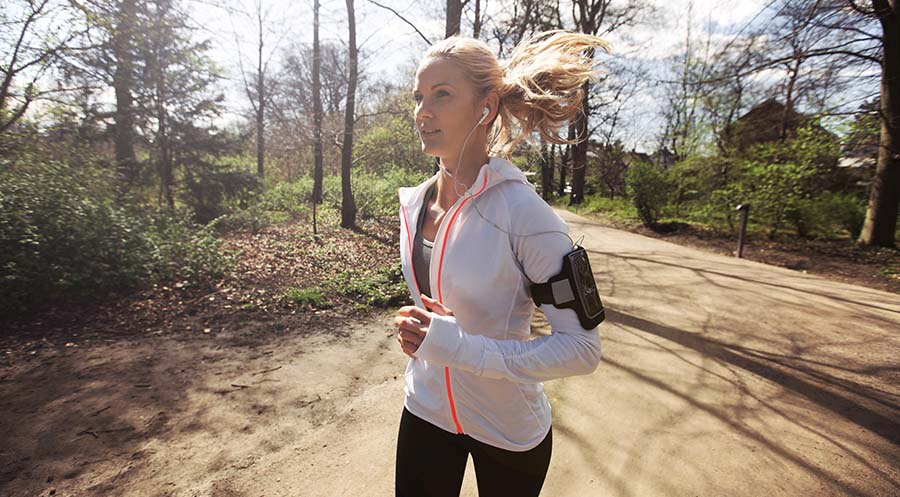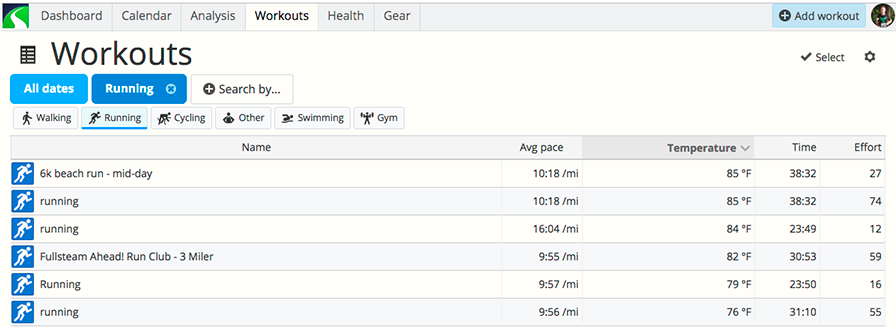How Wind Impacts Workouts
Learn how wind slows you down, speeds you up, and helps you overheat
You sometimes hear cyclists or runners grumble about having to power their way into headwinds; but it's also common to encounter the opinion that the influence of wind is more psychological than it is physical. The question is, does wind impact your performance in a meaningful way, and if so, how?
The answer is blowin' in the wind
It doesn't take hurricane-force winds to impede or improve your workouts. Soft breezes at your back or in your face can make a sizable difference — and the more distance you cover, the more it influences your times, energy consumption, and body temperature. Scientific research on this topic has been carried out multiple times, and the findings are similarly conclusive.
Here's the basic gist on headwinds: when you're running into the wind, you need to work harder to maintain your forward momentum, which increases your oxygen consumption. This is why your performance suffers. The inceased breathing causes you to lose energy, making you less efficient. This is a real issue, because efficiency is crucially important.

In the early 1970's, a British physiologist named Griffiths Pugh conducted pioneering research on how winds impact runners. Not surprisingly, he found that as the speed of the wind increased, the difficulty for the runner increased. How fast the subject was running was also a major factor. The faster your pace is, the harder you need to work.
Drafting: it's not just for the Tour de France
Pugh also discovered that drafting 1 meter or so behind another runner eliminated up to 80% of the resistance created by the headwind. So, in longer distances races, closely following behind someone else into a headwind can be seriously advantageous.
More takeaways from Pugh's research:
- Running in 10 MPH wind is 4 times as difficult as running in 5 MPH wind
- Running in a steady breeze at a 5:40/mile pace is twice as hard as running at an 8:00/mile pace
Does the wind have your back?
A few interesting findings about tailwinds have been identified by scientific studies over the years. Researching a runner on a treadmill in a wind tunnel in the 1980's, C.T.M. Davies determined that tailwinds help your performance, but the boost it gives you is only half of what headwinds take away.
...a headwind could slow you down 10 seconds, and the same wind at your back only speeds you up by 5 seconds.
For example, a headwind could slow you down 10 seconds running a set distance, and the same wind at your back over the same distance only speeds you up by 5 seconds. Keep in mind that the subject in these tests was limited by the speed of the treadmill they were on, and outdoor running may fare better. But, the bottom line is that tailwinds don’t speed you up as much as headwinds slow you down.
Another important factor concerning tailwinds is how they can interfere with your ability to cool down. A light tailwind that moves at roughly the same speed as yourself essentially eliminates the cooling properties of the wind. As we explain in our post about How Humidity Impacts Workouts, in order for sweat to cool you off, it needs to evaporate. If you're accompanied by tailwinds of an equal speed, you're essentially moving in still air, potentially negating any slight benefits from a tailwind speed boost.
See how wind affects you
You can easily determine how wind impacts your own performance with the weather features in SportTracks. Every user gets detailed weather information applied to their entire workout history, which includes Wind Speed and Wind Direction. Plus, you can easily import your workout history from other platforms after you signup for your free 45-day trial. Weather data will automatically be added to every GPS workout you have (even if you never had weather data on these workouts before).

You can then quickly find workouts that you completed in the past that had similar conditions. This done in the Workouts page in SportTracks. If you have run or ridden on a similar course multiple times, you can filter your workouts by Sport on this page. Then, you can select similar workouts from the list to access their complete weather details. Then you can compare your performance in various wind speeds and directions.
Hopefully this has been helpful! Learn more about how different kinds of conditions impact your workouts in our articles about humidity and cold weather.
| Article written by Sam Mallery, Director of Marketing, Zone Five Software Inc. |
